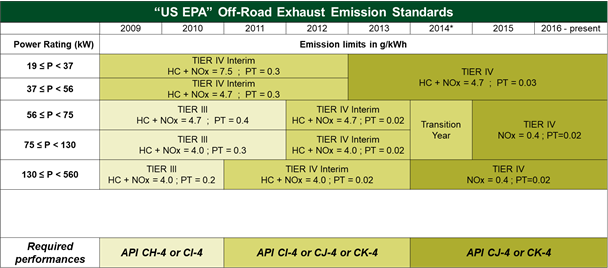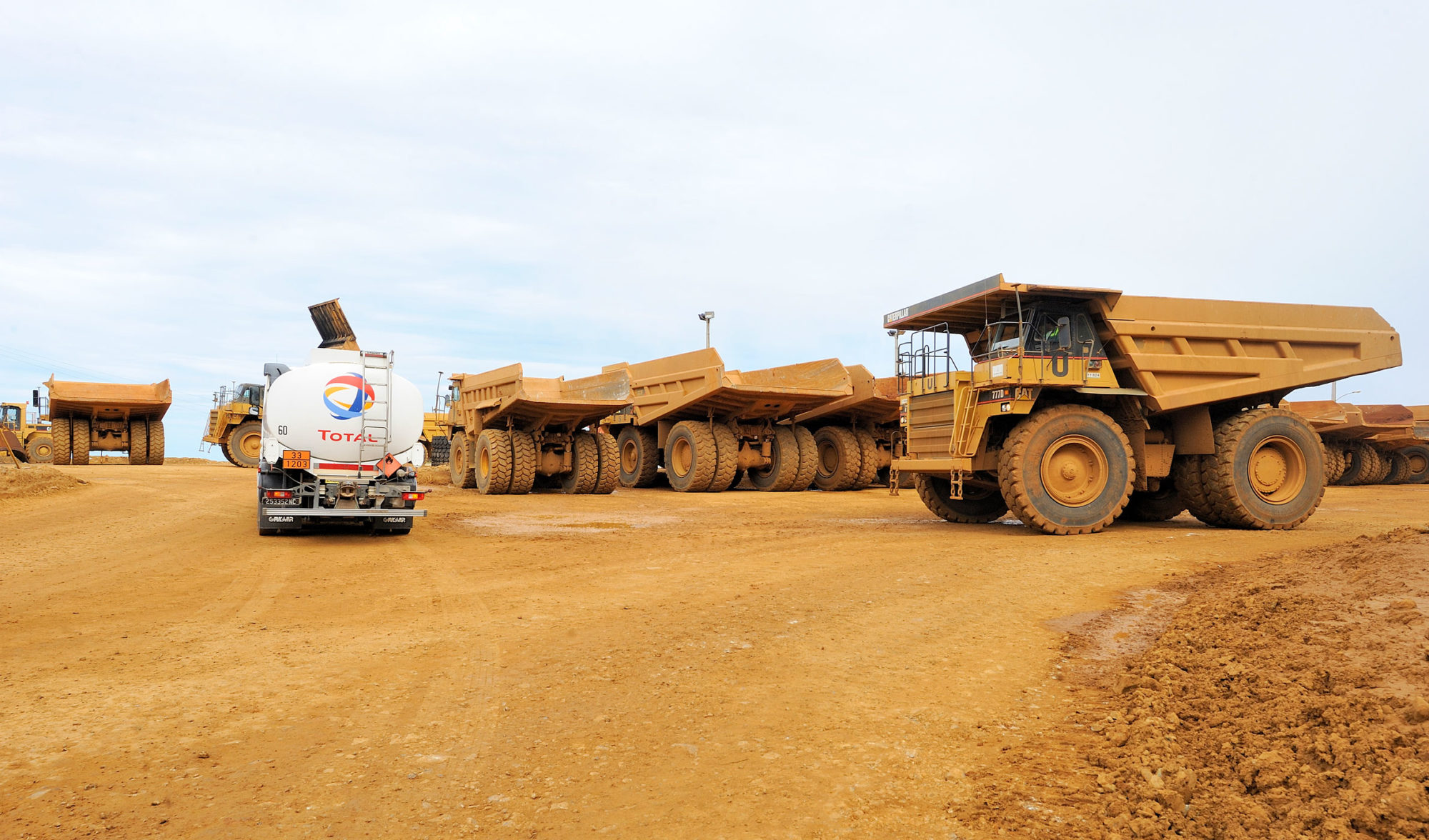Within the currently active mining, construction and transportation industries, heavy equipment owners are faced with different designs of diesel engines requiring different oil performance specifications. Fuels and oils solutions provider to the mining industry TOTAL told IM: “The real dilemma stems from having different API specification oils and ensuring that the correct oil specification is utilised in the correct engine-emission Tier-type.”
For example, if a fleet of 100 vehicles comprising of 98 units of US EPA Tier 1 (corresponding to EU Stage I in Europe) and Tier 2 (EU Stage II) engines in non-road mobile machinery application, then the operations team can ensure that the bulk of engine oil stored on-site could utilise an API CI-4 engine oil, with only two units (more modern engine models in the fleet), requiring the higher specification API CJ-4 engine oil. “As more and more Tier 4 (or EU Stage IV) engines get added to the fleet, the issue to consider is when would be the optimal time to change the entire fleet over to the higher engine oil specification, to cater to the Tier 3 and 4 engines in the fleet. In short, Tier 2 and earlier engines can operate quite comfortably on API CI-4 oils. However, the same cannot be said for those engines requiring an API CJ-4 or CK-4 engine oil, especially those fitted with Diesel Particulate Filters (DPFs).”
The first implication of not using an API CJ-4 or CK-4 engine oil where it is required is that the engine may not meet its designed emission performance, due to higher sulphated ash, phosphorus and sulphur (SAPS) content resulting in higher particulate emissions and potentially, exhaust after-treatment catalyst poisoning. “The low-SAPS engine oil additive package contain less metallic compounds such as calcium, magnesium and zinc which results in less solids in the burnt oil, and hence less particulate emissions. In order to be classified as low SAPS, the residual solids (sulphated ash, as determined in an analytical laboratory) must be less than 1% by weight of the oil sample being burnt. However, one of the down sides of low-SAPS oil is generally a lower Total Base Number (TBN) which means reduced ability to offset prolonged acid attack. This is one of the reasons why low sulphur fuels (50 ppm and less) should be utilised in engines requiring low SAPS oil.”
On the other hand, API CI-4 oils can give optimum acid corrosion protection for Tier 4 (or earlier engines) without Diesel Particulate Filters (DPFs) utilising diesel fuels containing up to 5,000 ppm sulphur content. Tier 4 (interim or final) engines fitted with DPFs require use of low-SAPS engine oil (API CJ-4 or CK-4). If an API CI-4 oil is utilised (containing more metallic additives than a low-SAPS oil), then it is probable that the DPF will become blocked. The engine is then likely to ‘de-rate and go into regeneration mode’. If the engine cannot sufficiently clear the DPF of these metallic deposits, then the DPF will need to be dismantled and cleaned or replaced. “Thus the move to API CJ-4 and CK-4 engine oils sooner rather than later is often justified simply for ‘future-proofing’ a fleet of mixed-Tier engines, as it will be required at some stage.”
Below is a guide from TOTAL on how to select a suitable engine oil, based on emission regulations (and engine year of manufacture). API CK-4 can substitute API CJ-4 and prior levels after December 2016.

Lubricant specialists from TOTAL it says play a crucial role in working with manufacturers to maximise the efficiency of these filtration systems; and reducing SAPS is key to this efficiency. “Sulphated ash can interfere with the regeneration of DPFs and result in blockages; phosphorous can poison catalysts, while sulphur can increase the emission of sulfur oxides and particulate matter.”
“The TOTAL RUBIA WORKS 4000 SAE 15W-40 is a low-SAPS engine oil which covers a wide range of diesel-powered heavy duty vehicles offering high performance, efficiency and reduced service costs for the user, while ensuring optimum operation of emission after-treatment systems for many years.”










